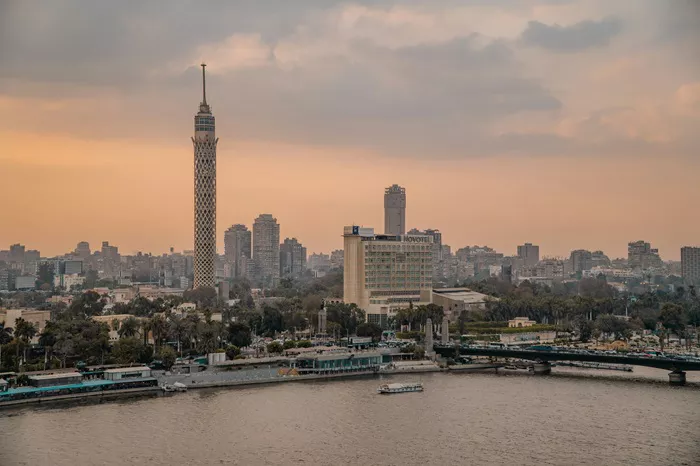The global response to climate change is increasingly shaped by local actions, given that climate vulnerabilities are inherently specific to each region. Effective climate action requires the mobilisation of finance tailored to local needs, and Egypt’s National Initiative for Smart Green Projects (NISGP) is a prime example of such a localized approach.
Launched by the Egyptian government in 2022, NISGP has developed into a practical model for overcoming the challenges of climate finance. It serves as a platform for identifying and supporting investable local climate projects across various sectors, and aims to mobilize private sector finance to drive climate action. The initiative’s goal is to source a pipeline of projects that can be scaled and replicated, ultimately fostering sustainable, climate-resilient development.
The NISGP began with a call for projects from all 27 of Egypt’s governorates. The initiative invited submissions in six categories: large-scale, medium-scale, small-scale, start-ups, non-profit initiatives, and women-led projects. Applicants must meet six key criteria: environmental sustainability (green component), technological innovation (smart component), economic feasibility, replicability, sustainable impact, and inclusivity. Since its inception, NISGP has received over 17,000 applications, demonstrating widespread interest and commitment to localized climate action.
The initiative employs an equal representation system, promoting the top three projects from each governorate within each category to a nationwide competition. These projects are then assessed by a technical committee to ensure they meet the program’s criteria. This process prioritizes solutions that are tailored to the unique climate challenges faced by different regions, fostering context-specific interventions that leverage each governorate’s comparative advantages.
Successful Mitigation and Adaptation Projects
NISGP-funded projects showcase innovative models in climate mitigation and adaptation, particularly in arid areas, coastal zones, agricultural regions, and energy and water management. One notable example is from the New Valley governorate, where a project developed a nature-based substance to treat water at one-fifth of the cost of traditional methods. Groundwater is the primary source of freshwater in this arid region, and without treatment, iron concentrations exceed safe levels for consumption.
Another example comes from Dakahlia, a governorate in the Nile Delta, where an AI-powered pest control system was implemented to support sustainable agricultural practices. In Ismailia, a project utilizes geothermal energy to reduce carbon emissions from poultry farms. These projects, along with others, have the potential for replication in different locations, contributing to broader climate action efforts.
NISGP’s success lies in its multi-stakeholder approach, which brings together international organizations, multilateral development banks, the Egyptian government, public and private banks, and the private sector. This collaborative hub facilitates the development of project pipelines, turning innovative ideas into investable opportunities. Many of the projects have already attracted significant investment and received the necessary technical assistance through partnerships with international stakeholders.
Ensuring the Scalability and Sustainability of Local Climate Action
The next phase of NISGP will focus on monitoring the scalability of the winning projects, ensuring that successful interventions can be expanded and replicated across Egypt. By directly involving local communities in driving climate action, NISGP ensures that these initiatives deliver tangible benefits to those most affected by climate change. This approach also emphasizes the importance of encouraging continued financial support for local climate projects to achieve equitable development outcomes.
To effectively bridge the gap between macro-level climate policies and grassroots implementation, it is crucial that Nationally Determined Contributions (NDCs) integrate local challenges and impacts. The development and financial models used in these projects must be green, inclusive, and digital to ensure long-term success and sustainability. NISGP exemplifies this approach by aligning with these essential principles and promoting them throughout Egypt.
A Model for Climate Finance
NISGP offers a replicable blueprint for successfully localizing climate and development action. The initiative addresses urban-rural gaps, promotes knowledge sharing, and provides capacity-building opportunities for project proponents. Its impact, scalability, and alignment with global sustainability goals have earned it international recognition, including praise from the World Economic Forum as one of the best sustainable practices in the Middle East and North Africa.
As the world looks for solutions to the climate crisis, Egypt’s NISGP serves as a model for how localized climate finance can drive meaningful change, and it is crucial that similar initiatives be replicated in other regions to further the global fight against climate change.
Related topics:
- India Surpasses China in Gold Purchases, Buying 51% More in Three Months
- Gold Rates Skyrocket in Chennai on Diwali, 24K Gold Exceeds Rs. 81,000 Per 10 Grams
- Gold and Silver Prices Rise Across India on January 13, 2025


